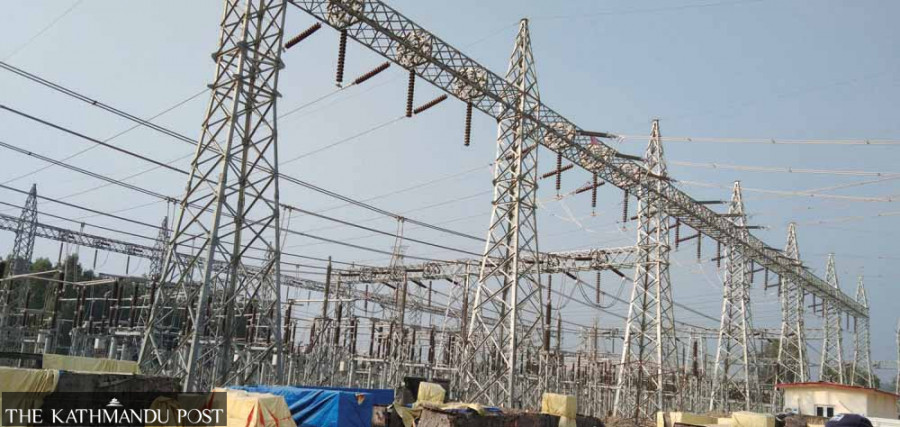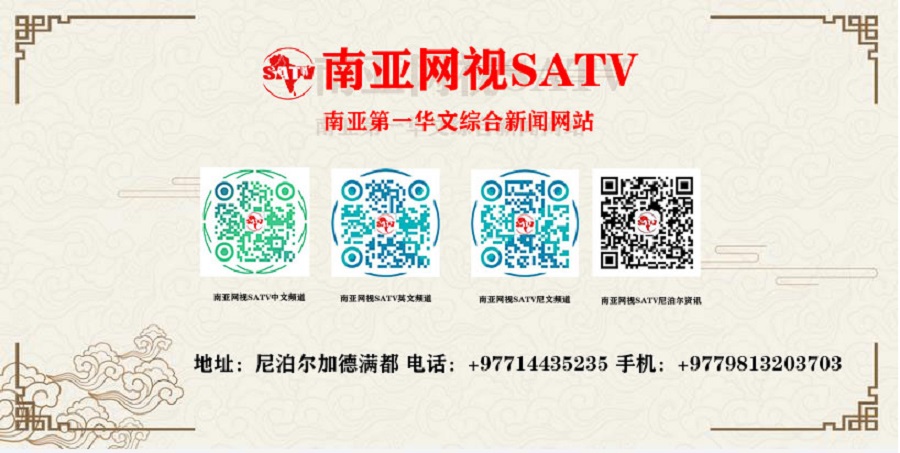
A way for Nepal to utilise its surplus energy is export it to India. Post File Photo
India has responded positively to Nepal’s request to allow export of electricity from Nepal to sell in India’s power exchange market before the upcoming monsoon season, the Ministry of Energy, Water Resources and Irrigation said on Thursday.
“There has been consensus between the two sides that India would give approval for Nepal’s proposal to export power to India from various hydropower projects in Nepal at the earliest as per India’s existing rules on power trade,” the ministry said in a press statement on Thursday.
Exporting more power to India in the upcoming monsoon season was one of the agenda items of the joint secretary-level Joint Working Group and secretary-level Joint Steering Committee meetings between the two countries held on Wednesday and Thursday, respectively, in Kathmandu.
“Indian officials agreed that they would accelerate the approval process before the wet season to help Nepal export power to India,” said Chiranjeevi Chataut, joint secretary at the Ministry of Energy, Water Resources and Irrigation.
According to Nepal Electricity Authority (NEA), it has submitted to India a fresh list of hydropower projects by incorporating the projects which were submitted last year too along with a few new ones seeking export approval.
“The projects include Upper Tamakoshi (456MW), Upper Bhotekoshi (45MW), Kaligandaki (144MW), Marshyangdi (69 MW), Middle Marshyangdi (70MW) and Chameliya (30MW),” said Suresh Bahadur Bhattarai, spokesperson at the NEA told the Post on Tuesday. According to the NEA, Likhu IV (52.4MW) is another project that has also been submitted to India for approval.
When all the power plants run in full capacity in the monsoon, the country is expected to reach an energy surplus situation as the peak hour demand is likely to remain at around 1700MW while the total production of electricity will reach around 2300MW by mid-July, according to the NEA.
“We are likely to witness an energy surplus of over 500MW in the upcoming monsoon,” said Kul Man Ghising, managing director of the NEA. “The Indian side has assured us that they will give clearance to Nepali hydropower projects for exporting electricity to India and Nepal will not have to face a situation of power spillage.”
In November last year, India’s Central Electricity Authority had given permission to Nepal to sell 39 MW of electricity produced by the 24MW Trishuli Hydropower Project and the 15MW Devighat Hydropower Project through the India Energy Exchange Limited. Both projects were developed with the southern neighbour’s assistance.
According to the Energy Ministry, the two sides have agreed to increase the volume of electricity to be traded through the 400kV Dhalkebar-Muzaffarpur Cross-Border Transmission Line to 600MW from the current 350MW. Since last December, Nepal has been buying electricity from India’s power exchange market through this power line. The country had exported the electricity in India's power exchange market through this line in November last year.
“If India allows us to export more than the agreed amount, we can sell electricity through other cross-border transmission lines too,” said Chataut. The two sides also agreed to increase the volume of power to be traded through this transmission line once the 400kV Hetauda-Dhalkebar-Inaruwa transmission line is completed, possibly by December 2023.
Currently, the Dhalkebar-Muzaffarpur Cross-Border Transmission Line is the only power line of 400kV capacity in Nepal.
The two sides also agreed that the NEA and the Power Grid Corporation of India would set up a joint venture company by April to build the 400kV New Butwal-Gorakhpur Transmission Line on the Indian side.
Nepal plans to build the Nepali portion, an 18-km Butwal-Gorakhpur section, through the grant to be received under the Millennium Challenge Corporation grant.
In September last year, the NEA and the Power Grid Corporation of India signed an agreement to build the Indian section of the New Butwal-Gorakhpur cross-border transmission line through joint investment. They have also agreed to implement the transmission service agreement between the NEA and the Power Grid Corporation of India alongside the establishment of the joint venture company.
A joint technical team of two countries will also conduct a feasibility study for constructing a new transmission line between Nepal and India’s West Bengal State. “Nepal has cross-border transmission line connections with Indian states of Bihar, Uttar Pradesh and Uttarakhand but not with West Bengal,” said Chataut.
According to the ministry, the two sides have also agreed to form a technical team to study the feasibility of developing large hydropower projects through joint investments in Nepal.













